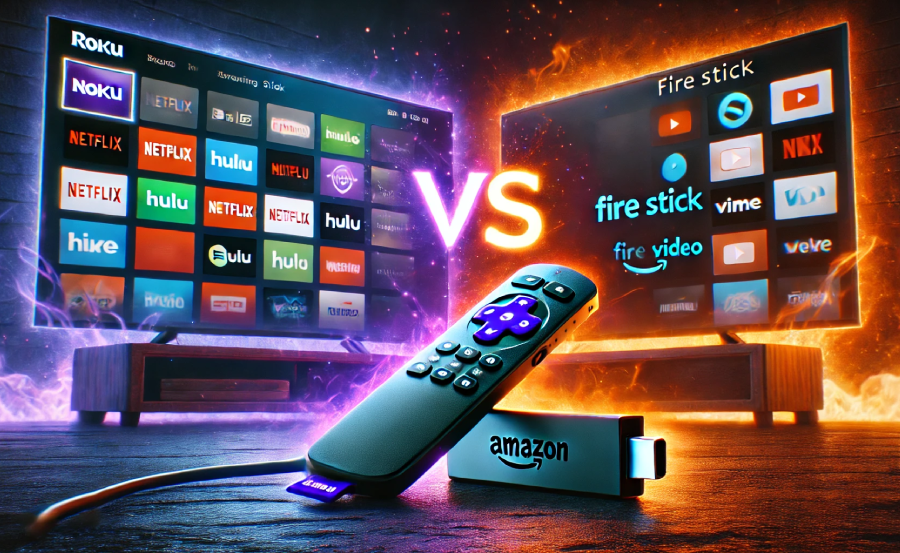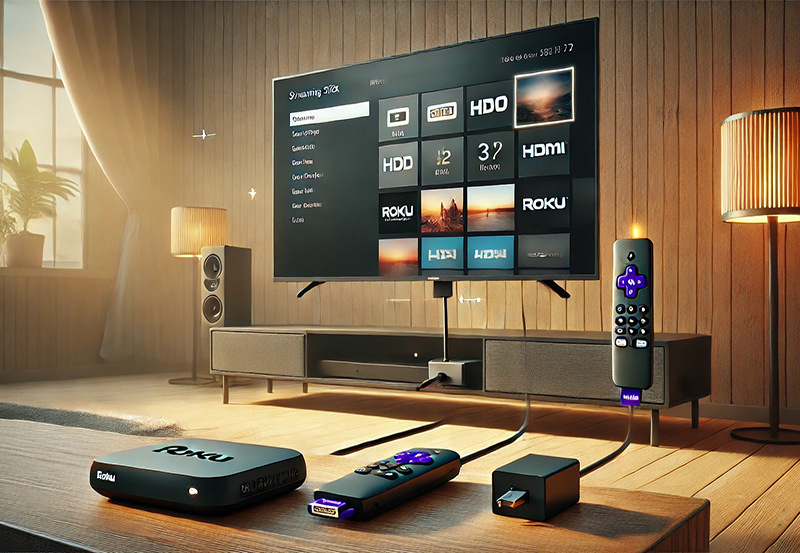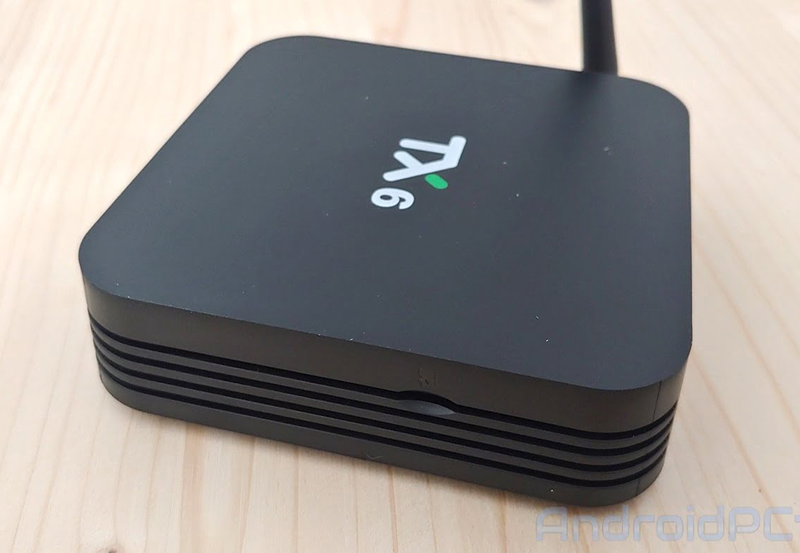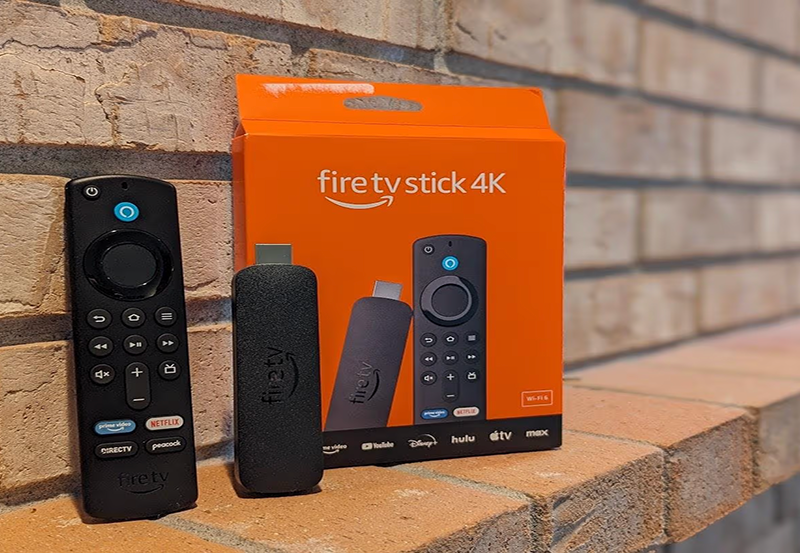When it comes to streaming devices for travelers, portability and convenience are essential. In the ever-evolving landscape of digital entertainment, choosing the right tool to carry your entertainment oasis can make or break a long journey. In this guide, we’ll examine two heavyweights of the streaming device realm: the Roku and the Amazon Fire Stick. Both offer a robust array of features, but which is more suited for the avid globe-trotter?
Understanding the Basics
For anyone frequently on the road, the right streaming equipment is vital. Both Roku and the Amazon Fire Stick have redefined what a portable streaming experience looks like. With both devices offering countless apps and services, knowing the basics can help in selecting the one that complements your travel lifestyle.
What is Roku?
Roku has a longstanding reputation in the streaming industry. Renowned for its user-friendly interface, Roku boxes and sticks have become staple accessories in many homes and, increasingly, suitcases. They provide access to countless streaming apps, including Smarters IPTV, which provides an expansive selection of international channels.
Pro Tip:
Stream live sports and entertainment seamlessly with Top IPTV subscriptions for unparalleled quality and performance.
Pros of Roku for Travelers
Roku’s appeal to travelers often lies in its simplicity and universal compatibility with hotel TVs. It connects easily via HDMI, allowing users to quickly set up wherever they find themselves. Moreover, Roku’s no-frills remote ensures quick navigation without unnecessary complexity.
Cons of Roku for Travelers
Despite its many merits, Roku’s reliance on a consistent internet connection can be a drawback. Travelers to remote areas might find themselves without reliable Wi-Fi, complicating streaming plans. Additionally, certain geographical restrictions can limit access to some channels.
What is Amazon Fire Stick?
The Amazon Fire Stick is a worthy competitor in the field of portable streaming devices. It’s embedded with Amazon’s digital ecosystem, making it a go-to gadget for frequent Amazon customers. Loaded with a suite of apps and the Alexa voice assistant, it provides an intuitive platform to redefine your IPTV watching experience on the go.
Pros of Amazon Fire Stick for Travelers
The Amazon Fire Stick shines in its comprehensive integration with Amazon services. For Prime members and Kindle users, on-the-go access to purchased content offers convenience unparalleled by other devices.
Cons of Amazon Fire Stick for Travelers
However, its dependence on Amazon’s ecosystem might be limiting for individuals who utilize other services more frequently. Additionally, the Fire Stick’s slightly bulkier build can detract from its portability compared to its sleeker competitors.
Portability and Ease of Use
Portability is subjective—while some users prioritize size, others might focus on usability. Both Roku and the Fire Stick are compact, but how do they measure up in a traveler’s backpack?
Size and Packing
The Roku Streaming Stick’s featherweight design makes it easy to slip into a crowded bag without fuss. Meanwhile, the Amazon Fire Stick, although slightly larger, offers a bit more punch in performance, albeit with potentially noticeable heft.
Setup Simplicity
On-the-go setup is where Roku truly excels with its plug-and-play feature. Fire Stick’s initial setup demands an Amazon account, which might initially hinder those without one ready to go.
Content Diversity for the International Traveler
Travelers often seek apps that offer international channels. Here’s where Smarters IPTV and other IPTV services enter the conversation.
Smarters IPTV Availability
Both Roku and Fire Stick support Smarters IPTV installation, giving travelers access to diverse channels across the globe. However, regional availability might affect which international channels are accessible in specific locations.
Expanding with Additional Apps
Roku offers a range of public and private channels, while the Fire Stick shines with Amazon’s vast library, providing apps for every type of viewer. Travelers will appreciate options, aiding their IPTV watching experience, regardless of where they are.
Connectivity: The Key to Seamless Streaming
In a perfect world, every hotel or Airbnb offers pristine Wi-Fi. Unfortunately, the reality can be quite different. Connectivity prowess may sway your decision between the two devices.
Wi-Fi and Offline Capabilities
Both devices primarily function on Wi-Fi, yet Roku typically handles bandwidth constraints better, maintaining a streamlined streaming experience. With a Fire Stick, the buffer lords might occasionally rear their heads.
Compatibility with Mobile Hotspots
Mobile hotspots have become lifelines for many travelers. Roku and Fire Stick can connect to your smartphone’s internet, though configuring them may require patience, especially in complex network environments.
User Preferences and Flexibility
Compatibility and flexibility are integral to any travel-focused gadget. Between Roku and Fire Stick, user preference plays a significant role in determining the most suitable device.
User Reviews and Feedback
Based on extensive user feedback, Roku tends to garner praise for its simplicity, making it particularly appealing to those who favor straightforward operation. Meanwhile, the Fire Stick offers technological enthusiasts the depth and customization they crave.
Modifying to Fit Personal Needs
Both devices facilitate some customization, though the Amazon Fire Stick’s access to apps like Redefine Your IPTV Watching Experience allows for enhanced user interaction with technology, perfect for those who customize heavily.
Cost and Value Proposition
Travel often incurs significant expenses, and understanding the cost-value ratio of these devices can influence the purchasing decision.
Initial Purchase Costs
Typically, Amazon Fire Stick devices fluctuate more within the same product category, offering a spectrum from basic to 4K HD capabilities. Roku sticks, meanwhile, generally maintain more stable pricing, providing consistency for budget-focused buyers.
Long-Term Value Considerations
When evaluating long-term value, consider the scalability of each platform. Although both offer substantial selections of free content, committed viewers might lean toward purchasing additional subscriptions with the Fire Stick, enhancing their viewing experience.
Final Thoughts on Choosing the Right Device
Ultimately, the choice between Roku and the Amazon Fire Stick for a traveler hinges on individual needs and habits. While some prioritize the streamlined simplicity of Roku, others might embrace the complex integration capabilities of the Fire Stick.
Aligning Your Choice with Lifestyle
Frequent flyers seeking simplicity might find Roku fits the bill, whereas users deeply embedded within the Amazon ecosystem could prefer the Fire Stick. Weighing these personalized options ensures travelers select a device best suited for their digital life on the road.
Personal Boo-Boos in Disguise
Oh, and don’t worry if you make a less-than-perfect choice. Both devices are affordable enough to allow for a splash of spontaneity in your buying decision. Happy streaming, jet-setter!
Frequently Asked Questions

What kind of internet connection do I need for traveling with these devices?
A stable Wi-Fi connection is ideal, but both Roku and Amazon Fire Stick can use mobile hotspots. Expect some variance in performance based on your location and data speeds.
Can I use these devices without a smart TV?
Yes, both devices require only a standard HDMI port. Most modern televisions in hotels or accommodations are equipped with HDMI, but do check beforehand or carry an adapter if necessary.
How do I know if Smarters IPTV is available in my travel destination?
The availability of Smarters IPTV can depend on your geographical location and service agreements; however, VPNs can sometimes bypass regional restrictions if legally permissible.
Do these devices support offline viewing options?
Currently, neither Roku nor the Amazon Fire Stick support saving content offline like some mobile apps do. Your best bet would be to download content directly onto a mobile device.
Are there any additional costs after buying a Roku or Fire Stick?
Both platforms provide access to free channels, but some premium content and apps might require subscription purchases. Evaluate your subscriptions based on your viewing preferences.
Is there a way to control data usage while traveling?
Setting your streaming quality settings to a lower bandwidth option can help conserve data, a feature accessible within the platforms’ settings.
How Sony Smart TVs are Changing the Way We Watch TV





